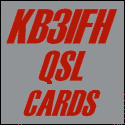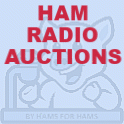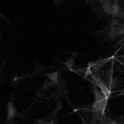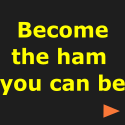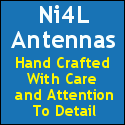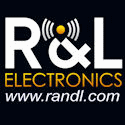 Amateur Radio Weekly – Issue 376
Amateur Radio Weekly – Issue 376
Fram2 makes first Amateur Radio contact from a SpaceX spacecraft
Rabea Rogg (LB9NJ) became the first astronaut and Amateur Radio operator to make contact with Earth from a SpaceX Dragon spacecraft.
Amateur Radio Daily
FCC filing for 219 MHz rules changes from ORI
Open Research Institute (ORI) has filed the first of what might be several comments and proposed rules making efforts to the FCC about reforming Amateur Radio use of the 219 MHz band.
Open Research Institute
You’ve been warned
I just couldn’t get comfortable above about 18 words per minute.
KE9V
25 years a Ham and still learning
I felt an urge to experiment – to contribute something useful to the science of radio communications.
Ham Radio Outside the Box
Save the dates: HamSCI Meteor Scatter QSO Party
The target storms are in August 11-12 (Perseids) and December 12-13 (Geminids).
HamSCI
Letter: Here’s a copper theft mystery
You just can’t make this stuff up.
RadioWorld
SSTV capsule V2 for high altitude balloons
This project has been above 30km high sending images in real time using SSTV technology. All of this using free to use PMR walkies.
Autodesk Instructables
The zBitx: Many flaws
Four days with the zBitx has been an exercise in frustration.
AE5X
Local Amateur Radio operators keep track of “trekkers”
Mike knew there was a need for radio communications along the Micco Trail as cellphone reception can be spotty.
Highlands News-Sun
Video
Can you predict how far your VHF/UHF radio will reach?
The basics of creating real-world radio coverage maps using free tools.
Ham Radio Rookie
Quickly deploy a BBS
Simple packet BBS server deployment.
The Tech Prepper
AO-7: The satellite that refused to die
It’s tough to fit 50+ years of remarkable history into 26 minutes.
AE4JC
Get Amateur Radio Weekly in your inbox.
Sign-up here
Amateur Radio Weekly is curated by Cale Mooth K4HCK. Sign up free to receive ham radio's most relevant news, projects, technology and events by e-mail each week at http://www.hamweekly.com.
 LHS Episode #576: Aurora Linux Deep Dive
LHS Episode #576: Aurora Linux Deep Dive
Hello and welcome to Episode #576 of Linux in the Ham Shack. In this episode, the hosts kick the tires on Aurora Linux, a distribution based on an immutable variant of Fedora 41. Topics include installation, configuration, pre-installed applications, third party repositories, the quirks of immutable distros, styling, customization and much more. Thanks for listening and have a great week.
73 de The LHS Crew
Russ Woodman, K5TUX, co-hosts the Linux in the Ham Shack podcast which is available for download in both MP3 and OGG audio format. Contact him at russ@bluecows.com.
 Catching Up With QSLs
Catching Up With QSLs
It’s been sometime since I have posted some of my incoming QSLs as I've been waiting arrival of the last one of my 6m winter DX season cards to arrive, which it finally did yesterday!
Unfortunately the peak of Solar Cycle 25 arrived a little ahead of time, peaking in the early fall rather than later or in early winter which is much more favorable for higher F2 MUFs. Nevertheless, some interesting days were to be had if the propagation patterns were followed closely, particularly after a solar event. Hopefully we will see a second peak of the cycle later this fall as most cycles have a double peak … if it comes in this summer, it’s not going to be of much help for 6m fans.
I started the 2024 6m sporadic-E season with a confirmed DXCC total of 110 countries and hoped to add at least one or two new ones via chordal-hop E or via F2 in the fall. My hopes were indeed met but if the cycle had peaked a few weeks later, the fireworks would have been something much more exciting.
 |
| JOHR 1287 kHz on Japan's northern Hokkaido Island |
 |
| Akashvani (ex-All India Radio) 15050 kHz |
 |
| Akashvani continues to be a reliable QSLer |
 |
| NTSC, China's 'WWV', can often be heard with its CW ident around dawn on 5.000 MHz. |
Steve McDonald, VE7SL, is a regular contributor to AmateurRadio.com and writes from British Columbia, Canada. Contact him at ve7sl@shaw.ca.
 Ham College 123
Ham College 123
Ham College episode 123 is now available for download.
Technician Exam Questions Part 9. T3A – Radio wave characteristics: how a radio signal travels, fading, multipath, polarization, wavelength vs absorption, Antenna orientation.
George Thomas, W5JDX, is co-host of AmateurLogic.TV, an original amateur radio video program hosted by George Thomas (W5JDX), Tommy Martin (N5ZNO), Peter Berrett (VK3PB), and Emile Diodene (KE5QKR). Contact him at george@amateurlogic.tv.
 Amateur Radio Weekly – Issue 375
Amateur Radio Weekly – Issue 375
ARRL seeks feedback from members re FCC Public Notice
League plans to file comments on “Delete Delete Delete” FCC notice.
ARRL
Fram2Ham SSTV transmissions planned
SSTV to transmit via SpaceX Dragon spacecraft March 31st.
AMSAT-SM
Earth-Venus-Earth bounce
Amateur operators achieve Venus bounce for only the second time.
Dwingeloo
Weak-signal performance of common modulation formats
The CW number is open to debate but it performs better than RTTY and PSK31.
K0NR
FT8 – All you need to know
FT8 enables you to make contact with stations even when the conditions are too poor for voice.
M7OJA
Quantum messaging anywhere on Earth
The satellite was able to send pulses of laser light, put into special quantum states, from a rooftop in Beijing to another at Stellenbosch University near Cape Town.
Nature
CQ Amateur Radio Hall of Fame seeks nominations
Recognizing individuals who significantly affected the course of Amateur Radio.
hamgallery.com
ARRL election committee adventures
Disqualified ARRL board nominees tell their stories.
ICQ Podcast
My most embarrassing field radio fail
What’s yours?
QRPer
A Ham with one voltmeter always knows the battery voltage
A Ham with two voltmeters is never sure.
Ham Radio Outside the Box
Video
RADE: Machine learning for speech over HF radio
Presentation of the new RADE Radio AutoEncoder digital voice mode.
David Rowe, VK5DGR
Add a USB port to your Yaesu HT
Let’s leverage the AIOC (all-in-one-cable) to create a Yaesu TNC/data interface.
KM6LYW
Smol antenna, big results
K6STR Emergency Backup Antenna.
N7KOM
Get Amateur Radio Weekly in your inbox.
Sign-up here
Amateur Radio Weekly is curated by Cale Mooth K4HCK. Sign up free to receive ham radio's most relevant news, projects, technology and events by e-mail each week at http://www.hamweekly.com.
 The Planning for MANNA@80 Continues…
The Planning for MANNA@80 Continues…
Planning for the special event stations commemorating the life-saving food drops to NW Netherlands near the end of World War II is now in full swing. 62 nationalities were part of Bomber Command in WW2.
Please visit Operation Manna @ 80 for a full list of stations around the globe. Here are the Canadian stations participating:
VB7MAN Surrey Amateur Radio Communications
In Canada, Surrey Amateur Radio Communications (SARC) has been granted special event callsign VB7MAN from April 1st to May 10th. We will be on the air from our training station and elsewhere prior to, during, and after the event and will seek involvement of the high school students from our RF Communications class. Contacts with Europe can be sporadic from our location but we are generally able to contact North and South America, Asia, and Oceania. We have created a QSL card to commemorate the event. The card bears the $100 Royal Canadian Mint gold and silver coin struck in 2020 for the 75th anniversary.

We will update this page as plans progress but hope to make a QSO with you in April or May. Any certified amateur in BC may operate the special event callsign, as long as it is only used in one location at a time. If you wish to use the call on any band or mode, a Google calendar has been set up to reserve the call for your use between April 1st and May 10th. If you wish to book an operating time for VB7MAN, please contact VB7MAN@gmail.com.
John VE7TI
Coordinator VB7MAN@gmail.com
>
VB6MAN Calgary Amateur Radio Association
CARA will be operating from the Bomber Command Museum of Canada in Nanton, Alberta. They will activate on April 25, 26, and 27th and May 9 and 10. The final dates and hours of operations will depend on the radio amateur operators participating.
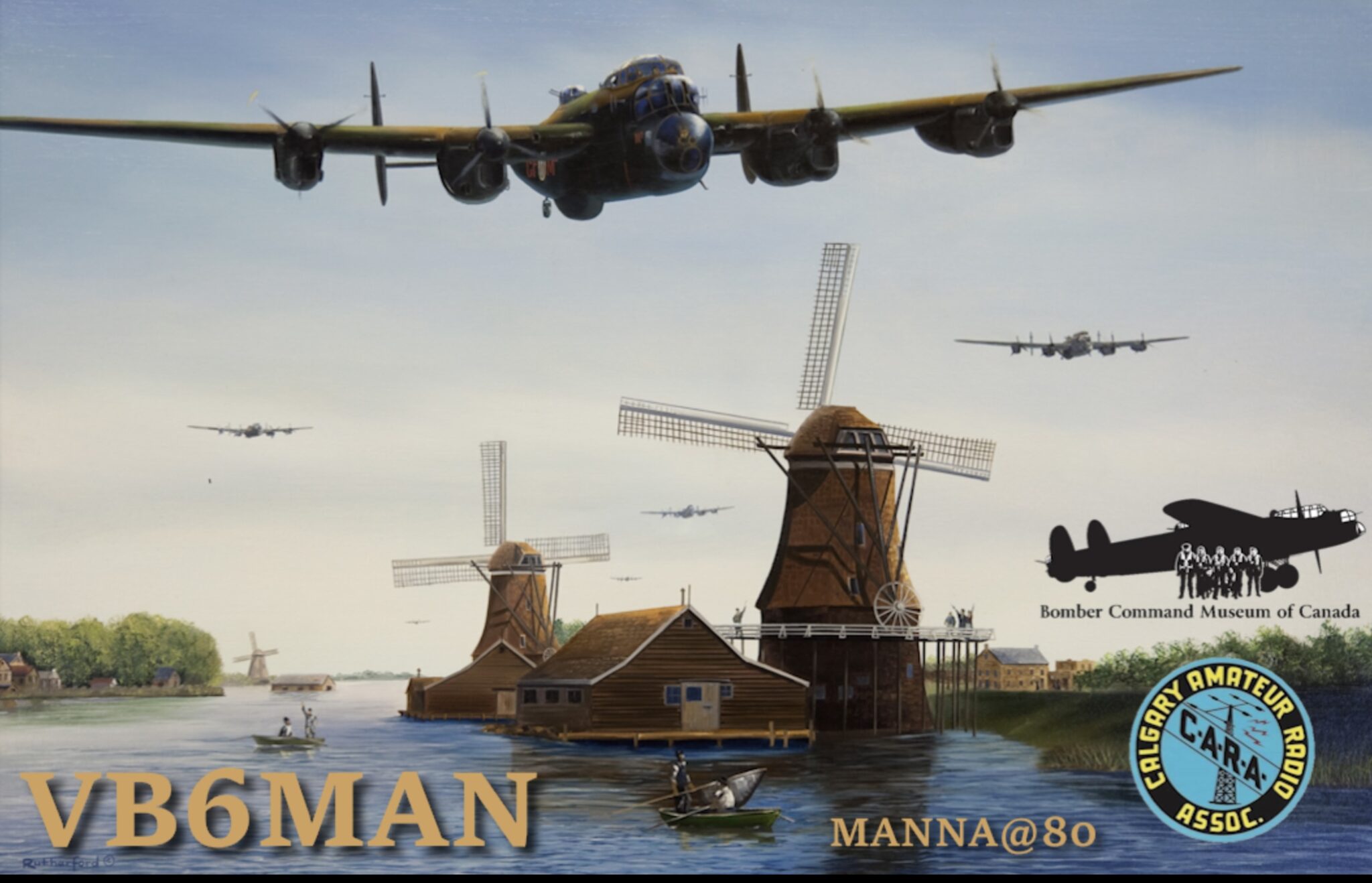
>
VE1MAN Nova Scotia
The Canadian teams closest to Europe will be operating from their club station as VE1MAN. They may be activating from a former WW2 air base or another location of significance to tie in with the event.

Radio Amateurs of Canada published an article about MANNA@80 in the March-April issue of The Canadian Amateur, as did the Radio Society of Great Britain in their national magazine RADCOM.
~
 Inspired by IMSAI Guy…New VNA + Multiport Test Kit on the Bench
Inspired by IMSAI Guy…New VNA + Multiport Test Kit on the Bench
If you’re a workbench ham, you like to measure things. Some like to just get a rough cut while others like to be “nuts” about it. There are groups, like Volt-Nuts and Time-Nuts, who focus more on what’s formally called Metrology. Me? I’m somewhere in the middle but tending toward more precise and reliable measurements, although I do get the Cal Lab magazine each month. Perhaps it’s because I taught classical measurement theory to PhD students for over 30 years and understand true-score theory (e.g., every observed measurement is determined by the “true score” plus some error). Adding multiple observed scores and modeling the errors is something I taught and used for a few decades. Reading Bob Witte’s books from HP as well as Joe Carr’s various texts helped me transfer over the statistical base into electronic measurement issues although clearly I have a lot to learn in this realm.
Building out a good test workbench has been one of my priorities over the past few years. I’ve been inspired by many others, mostly on Youtube, but the IMSAI Guy channel is one of my favorites.
The Soldersmoke Blog says his identity is Michael Cassidy W6UAB in Oakland California. He doesn’t exactly say on his Youtube Channel. Whether this is his real name or not, he is very educational in his videos. I have learned a lot but he’s cost me money! He is a clear workbench Elmer to me. I’ve acquired a couple of professional lab-grade test pieces on the used market for far, far less than what they cost new because he first went through them thoroughly on his Youtube Channel. The first was the HP 4735a LCR meter. Here’s my latest one.
The HP 8714ET VNA is a two port VNA. Yes, I have a few NanoVNAs. In addition, the SDR-KITS VNWA 3SE Automatic 2 Port Model with their MagiCal calibration device. Plus, I picked up a LibreVNA with their LibreCAL device. I recommend R&L Electronics for LibreVNA products. Why would I need another VNA? If you are seriously asking this question, my friend the Smoking Ape has some Cat Videos for you to watch. Because I wanted it is the simple answer, LOL.
Shown above is the 8714ET connected to the eight-port test set with an old Barker & Williamson Model 425 Low Pass Filter as the DUT. I purchased it at a hamfest for $5 to use the case but have not yet.The larger monitor on the right serves dually as a second screen to my PC (HDMI port) and as the VGA output with customizable color from the VNA. This is the conversion loss measurement shown. Note the USB floppy drive under the monitor.
Plus, it’s a device with a lot of features that raise the bar for bench testing. It is monochrome green in the internal display but customizable colorized in the VGA output. It’s remotely reachable by HP-IB (I use an HPIB-to-USB adapter), LAN (internal web server), and via a 3.5″ floppy disk. I purchased an inexpensive USB-based floppy drive for the Dell Precision 1700 PC that runs my workbench. And, yes, the 8714ET will indeed format a 3.5″ floppy to DOS. I suspect that I will retrieve screen images, the underlying data, and Touchstone files via the web interface but, heck, I’m kinda digging having a floppy disk in my Lab. In time, I will use some of the many IBASIC programs written for this line of VNAs. The PS/2 keyboard that I just ordered plugs into the rear of the VNA, making editing or writing IBASIC scripts much easier as well as entry for some features on the VNA.
I’ll let IMSAI Guy’s video playlist on his earlier model (HP 8711C upgraded to an 8712) give you the fuller run down on all the things it will do, especially with IBASIC programs that automatic a lot of testing, storage of calibration data, and so forth. But I added something to mine, the Agilent multiport test set, 8-port, 50-ohm model. I found it for $200 on eBay and it is pristine, almost as much as the 8714ET that I found there from a “junk shop” vendor. Very lucky it seems on this set of purchases.
An engineer friend (N5WDG) gave me some high quality test cables when he built a new house and cleared out some extras from his workbench. Good ones can cost almost as much as the used test gear scored online so I’m grateful for the crate of “stuff” that Thomas N5WDG, a WAN Engineer for AT&T, handed to me a couple of years ago. The connections between the VNA and the multiport test set require a standard DB25 male parallel port cable plus two specific firm metal connector jumpers. I found these new-in-box on eBay for $25 each. So with the $1500 price of the 8714ET VNA added to the multiport test set and cables I purchased, I have about $1,750 in this “like new” lab grade VNA from the 1990s.
One thing that the multiport test set provides is a much easier way to tune filters like repeater duplexers and such. The reference materials for the device lay out the wiring diagrams and how to tell the multiport device to configure the ports remotely from the VNA itself. The 100 db dynamic range will help a lot for tuning the standard 2M and 70cm duplexers that are in common use. Covering 300 khz to 3 Ghz, the 8714ET has up to 1600 data points which allows a more thorough sweep for a given frequency span. Nice.
There are always multiple documents to study on new “old” test gear. Each one has a design theory to the things it claims to measure. There are always quirks that support communities (e.g., HP Test Equipment Groups.io; EEVBlog Forum; Youtube) can education you on to more fully utilize gear like this. I also read the archived HP Journal for articles published announcing the release of gear like this. It’s very instructive to have one or more of the design engineers to outline the theory of the device, detailing how they approached the critical aspects of implementing the instrument. Lots of reading and study ahead!
Frank Howell, K4FMH, is a regular contributor to AmateurRadio.com and writes from Mississippi, USA. Contact him at k4fmh@arrl.net.






















